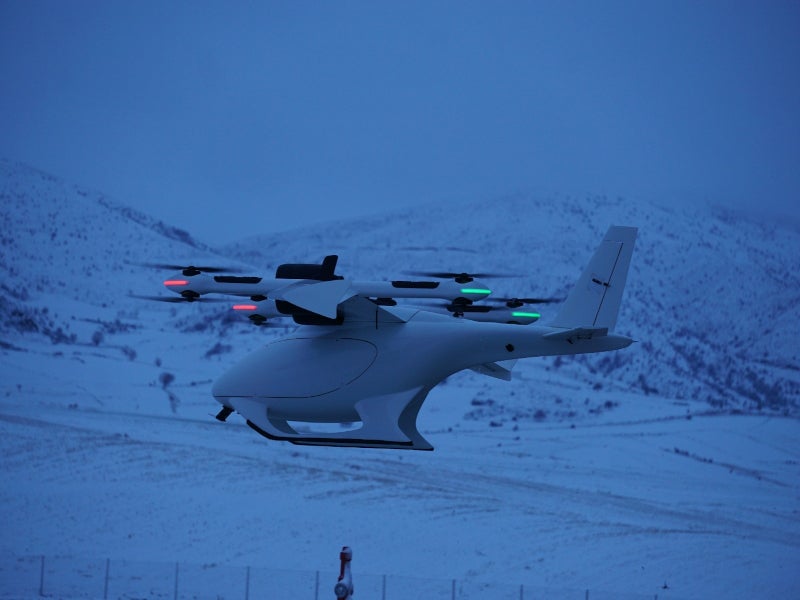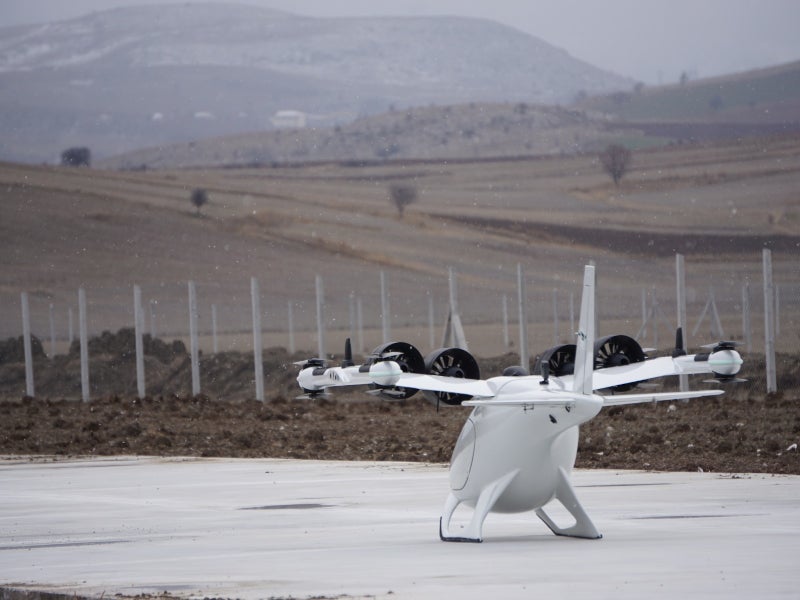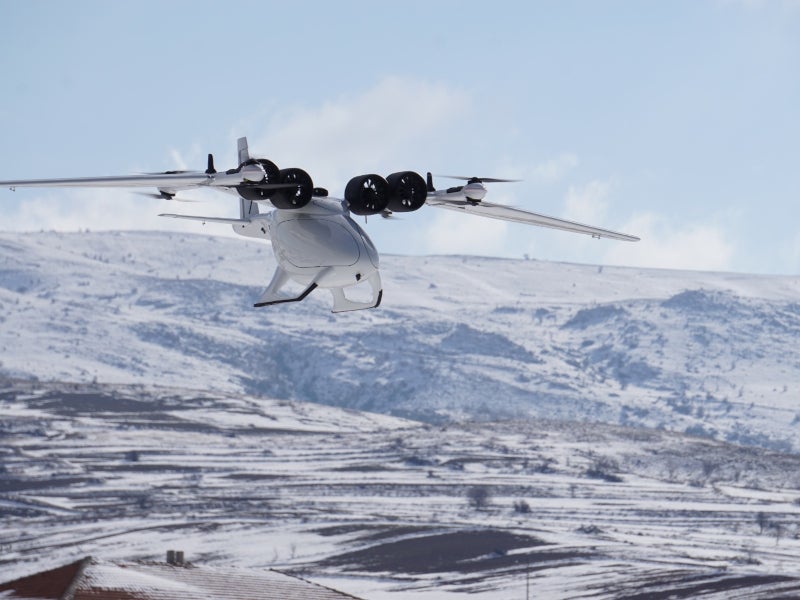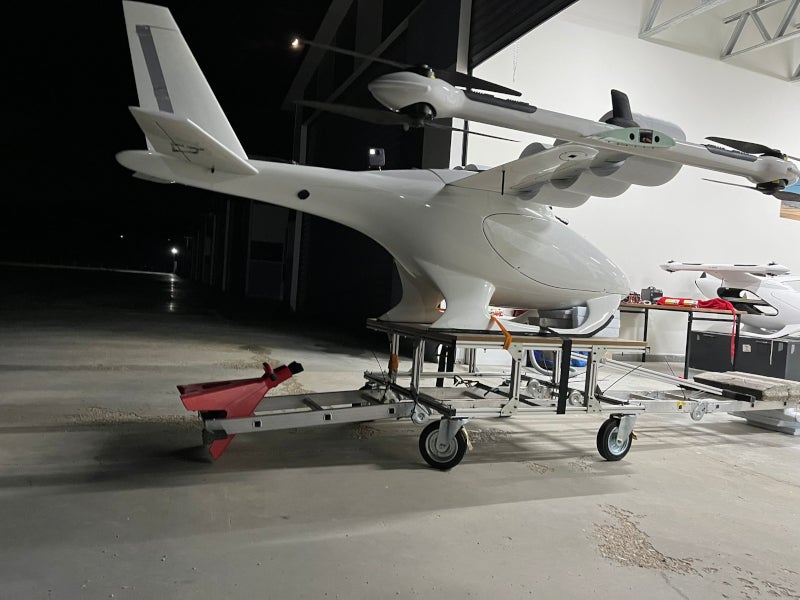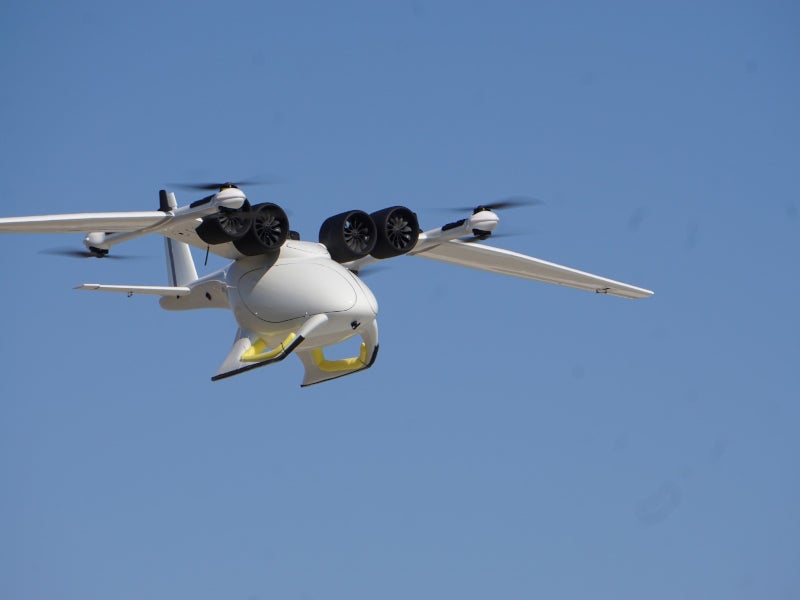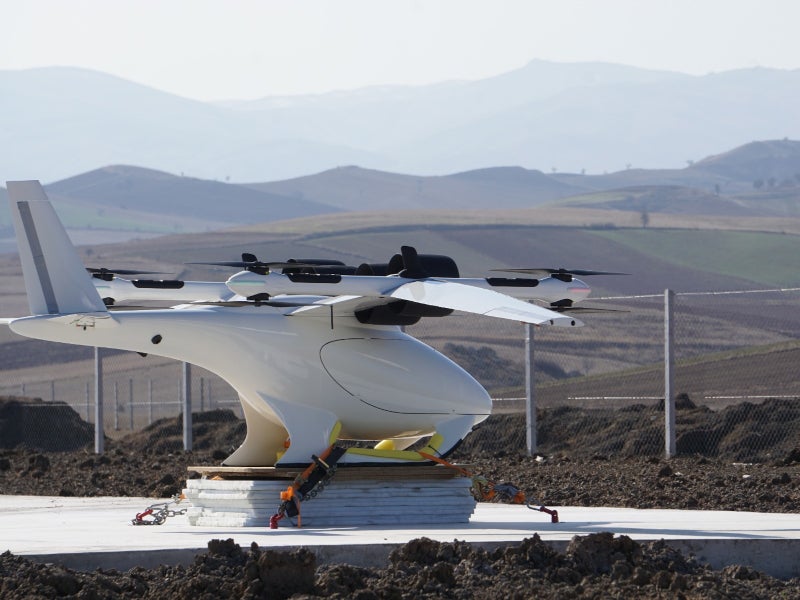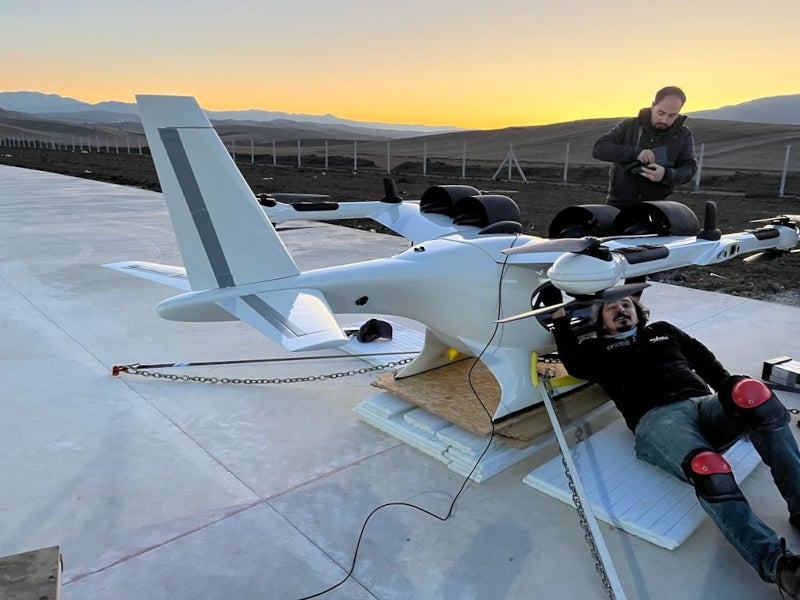JACKAL is a small, lightweight, modular vertical take-off and landing (VTOL) drone that is expected to fill a crucial position in the future unmanned air force concept for advanced combat operations.
The drone is designed and developed by Flyby Technology, a UK-based unmanned aerial vehicle (UAV) training provider, together with Turkish partners Fly BVLOS Technology, an aviation consultant; and Maxwell Innovations, an aviation component manufacturer.
The UAV will provide flexible capability for multiple types of combat missions over land, sea and air, such as air interdiction from the battlefield, close air support, engaging helicopters in flight, destroying tanks, delivering logistics, and preventing the enemy from using runways and roads.
JACKAL VTOL drone development details
The research and development (R&D) and design processes for the drone began at Dronepark in Gebze Technical University Technopark in Turkey in January 2022.
The UK Royal Air Force’s (RAF) Rapid Capabilities Office (RCO) contacted Flyby Technology to provide a brief on their new drone in the wake of Russia’s invasion of Ukraine.
In April 2022, the drone successfully carried out its first demo flight for the Turkish Armed Forces in Ankara, where it stayed in the air for 40 minutes during the flight.
Fly BVLOS Technology transferred the design and all other rights of JACKAL to the UK in the same month. Further, Fly X Technology, a part of Fly BVLOS Technology, began working on the JACKAL SiHA version at the request of the UK Ministry of Defence to convert JACKAL into a UAV version. The company also collaborated with Thales to explore the potential of firing its lightweight multi-role missile (LMM) from JACKAL in a trial.
The JACKAL SiHA version fired Thales’ LMM in its first test firing in England in October 2022. The drone successfully fired another Thales LMM missile in its trial firing sponsored by the RAF’s RCO in April 2023.
The drone has also attracted the interest of Ukraine, Iraq, and Taiwan.
JACKAL VTOL drone design details
JACKAL is a multi-role attack drone capable of firing multiple missiles. It has a wingspan of 5m and can carry a payload of up to 15kg up to a range of 130km at a maximum altitude of 4,000m.
The drone’s ability to launch and support the LMM makes it capable of firing modern battlefield weapons in flight to neutralise adversaries. It features a plug-and-play system to incorporate new equipment and technologies into the aircraft between missions, as well as during continuous combat situations, enabling it to comply with future regulatory guidelines and airworthiness standards.
Technology details of the JACKAL drone
The JACKAL drone features beyond visual line of sight (BVLOS) sub-theatre battlegroup level for a tactical attack, and multi-spectral sensors for intelligence, surveillance and reconnaissance (ISR) operations.
It can be integrated with Starstreak and LMM munitions and has an operational range of up to 150km on secure C2 links.
Engine and propulsion system
The JACKAL drone uses four sets of twin contra-rotating propellers to take off, hover and land vertically while using four wing-mounted electric ducted fan (EDF) engines to move forward and manoeuvre at high speeds.
The drone can fly at a maximum speed of 160km/h and can cruise at a speed of 108km/h.
Advantages of JACKAL VTOL drones
JACKAL VTOL drones do not require vulnerable runways to take off or land, enabling them to operate from concealed locations, such as woods and urban built-up areas.
The modular design of the drone allows it to be compatible with future equipment and weapons for the advanced battlefield and provides an option to increase the load carrying and range capacity with new versions. The small size and lightweight design make the drone highly manoeuvrable, allowing it to navigate in tight spaces through narrow alleys and fly at high speeds.
One of the most significant technological advancements in the JACKAL drone is its ability to fly autonomously. The drone can navigate through complex environments and avoid obstacles without human intervention through advanced software and sensor technology, making it an invaluable tool for military reconnaissance and surveillance operations.
It can provide affordable unmanned air combat capability to nations that cannot afford attack helicopters or fighter jets to survive on the modern battlefield.

